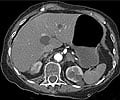
"More than 40 countries have implemented pictorial health warning labels. The U.S. was scheduled for implementation in 2012, but tobacco industry litigation has delayed implementation by claiming that the pictorial warnings the FDA proposed violate the industry's right to free speech. To inform future warning label policy development and implementation, more data are needed on U.S. consumer responses to various kinds of warning label content," says lead investigator James F. Thrasher, PhD, of the Department of Health Promotion, Education, and Behavior, Arnold School of Public Health at the University of South Carolina in Columbia, SC. "The current study addresses this issue, while focusing on responses among smokers from low income populations where smoking remains prevalent because previous tobacco control interventions have been less successful in reaching this group than higher income populations."
With financial support from the South Carolina Clinical & Translational Research Institute residing at the Medical University of South Carolina CTSA, the National Institute of Drug Abuse, and the U.S. National Cancer Institute, Dr. Thrasher and his research team conducted field experiments with nearly 1,000 adult smokers from July 2011 to January 2012. To be eligible for the study, these smokers had to have smoked at least 100 cigarettes in their lifetimes and to be currently smoking on a daily basis. They were recruited for the study at public places, including supermarkets, flea markets, and sporting events, in low- and middle-income areas in South Carolina. The population was randomly split at a 1:4 ratio into two groups: a control group and an experimental condition group.
The control group of 207 smokers rated each of the four HWLs that are currently on cigarette packs, which warn about lung cancer, heart disease, emphysema, pregnancy complications, and carbon monoxide inhalation. The experimental condition group evaluated nine different pictorial labels, representing a variety of health topics, including cancer, heart disease, and lung disease caused by second-hand smoke. Each message combined text with an image depicting either a graphic image of diseased organs, imagery of human suffering, or an abstract symbol, including both imagery that the FDA has recommended for warning labels in the US and alternative imagery used in other countries.
Respondents in both groups assessed their reactions to the messages according to a 10-point scale for credibility, personal relevance, and perceived effectiveness.
"The present study provided the first direct test of the hypothesis that pictorial health warning labels work better than text-only labels among people with low health literacy," explains Dr. Thrasher. "Ratings of the personal relevance and effectiveness of pictorial labels compared to textual labels were no different for smokers in high- compared to low-health literacy groups. However, smokers with low-health literacy rated pictorial labels as more credible than text-only warnings, whereas no difference was found among smokers with high health literacy."
Advertisement
"These results suggest that the FDA should consider implementing warning labels with more graphic imagery in order to maximize the impact of warnings across different populations of adult smokers, including more disadvantaged smokers," Dr. Thrasher notes.
Advertisement
Source-Eurekalert













